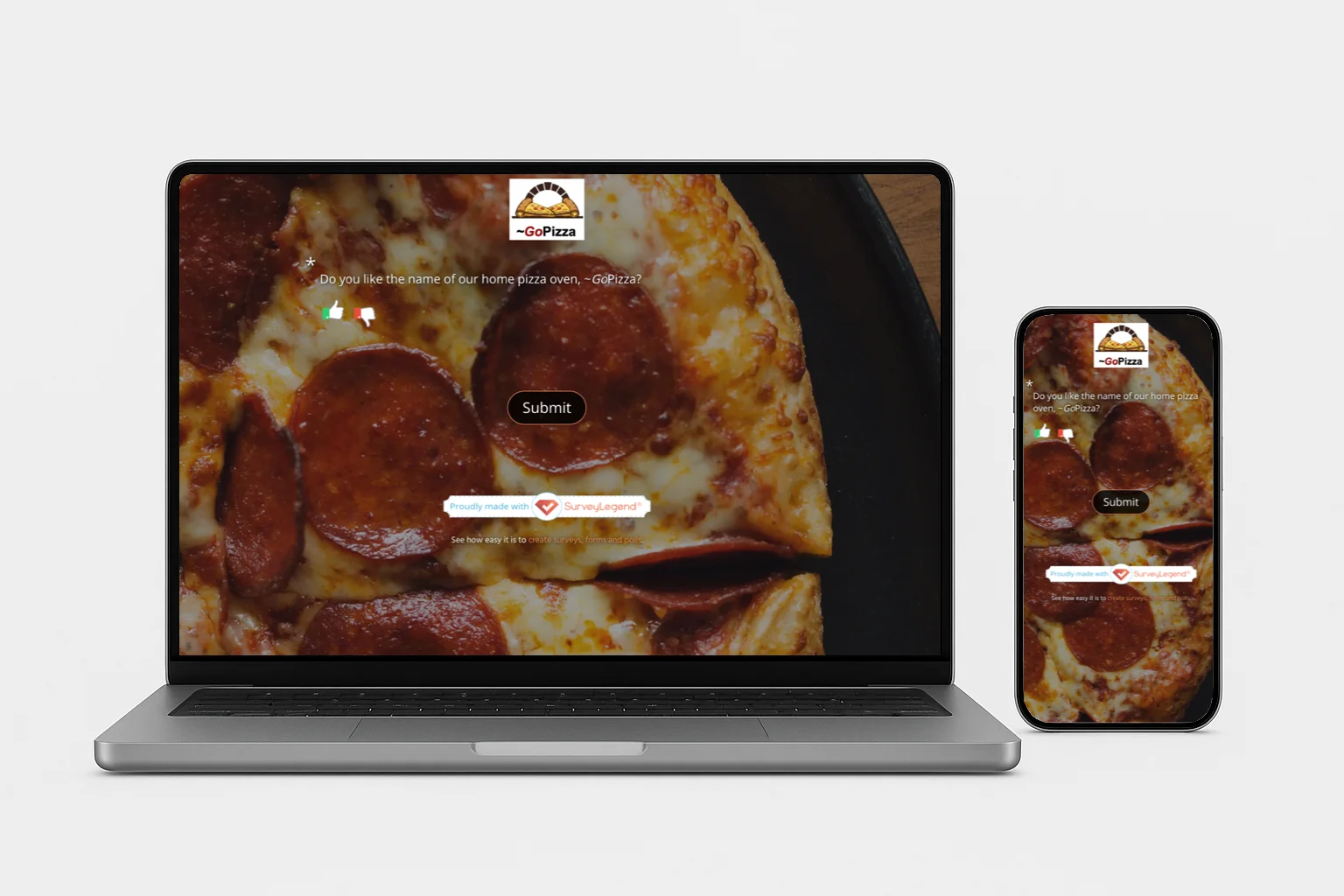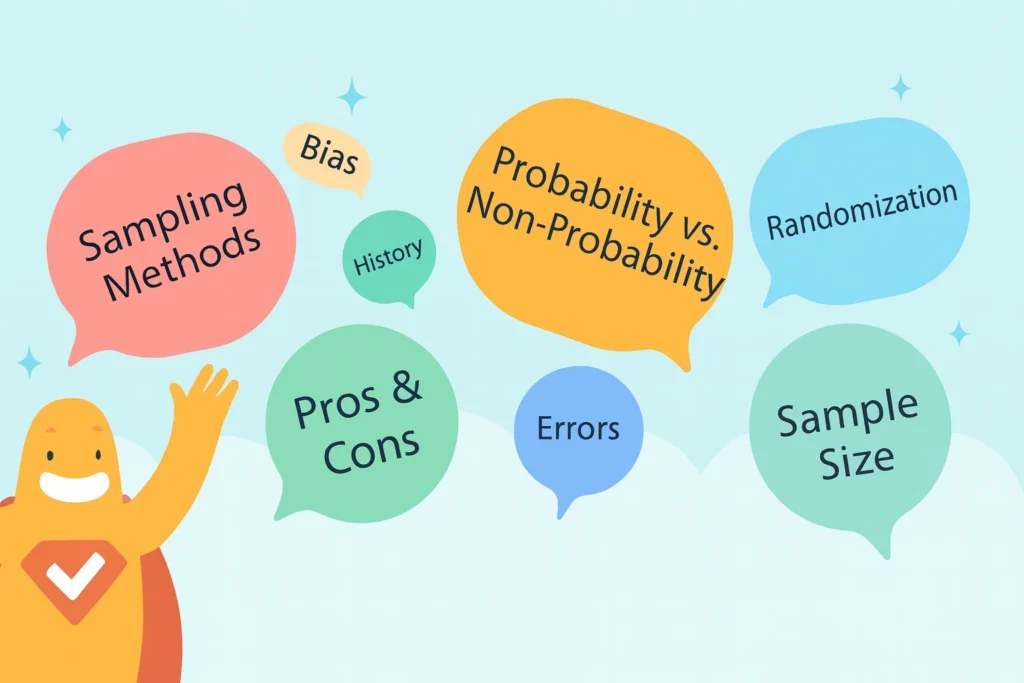A strong product name can make or break a launch, which is why conducting a product naming survey is essential. This guide explains how to test name ideas, evaluate consumer sentiment, and align names with your brand identity. It explores why product naming matters, how to understand your target market, and the key differences between brand and product names. You’ll learn how to conduct market research, maintain brand consistency, and use survey questions to gauge emotional response, clarity, and appeal. With practical examples and strategic tips, this article helps marketers choose memorable, meaningful product names that resonate with customers and support long-term success.
Create your FREE Product Naming Survey, Poll, or Questionnaire now!
We’ve all heard someone describe themselves as “terrible with names.” The same can be true when it comes to naming a product! To arrive at a good product name, a marketer should always conduct a product naming survey to gauge the public’s reaction to a name. These surveys can be given when testing the name of a new product, new line, or new service before the release of the product and subsequent product evaluation survey. Name testing is a critical step to analyze consumer responses, sentiment, and purchase likelihood before launch. It is important to systematically evaluate product names to ensure the right name is chosen for a successful launch.
Why Product Naming Matters
Here are some practical tips for choosing a product name that will help your product stand out and succeed in the market.
According to the Harvard Business School, more than 30,000 products are launched each year, and 95% of them fail. Some of these may live or die based on their name. To increase your chances of success, it’s important to align your product name with the qualities of an ideal product—one that meets customer needs and stands out in the market. Finding the perfect product name can significantly contribute to market success. So, it’s important to have a good product naming strategy to ensure your product’s profitability, endurance, and ability for future refinement. Even a great product can struggle with a poor name, while a bad product can undermine even the best naming efforts. A few things to consider:
- Keep it simple. A product name should be easy to pronounce (try practicing saying it aloud) and relatively easy to spell. This will help with recall and make a web search much easier for consumers.
- Make it unique. Unless you’re intentionally trying to confuse consumers by mimicking another product (which could result in a lawsuit), make your product name unique. This will help avoid confusion when someone is shopping or doing a web search.
- Allow for expansion. A successful product can lead to another product, but if you box yourself in with a very specific name or use, it can be difficult to expand. For example, Kitchen-Glow cleaner will not translate well if you want to expand into bathroom cleaners. Maintain focus on your long-term brand goals when choosing a name that allows for future growth.
- Consider international appeal. Many products grow by going overseas, so you don’t want a name that could turn off other cultures. Language is also a consideration. Consider the Chevy Nova when expanding into Mexico, where “No Va” means “Won’t Go,” not exactly a good name for a car.
- Evoke an emotion. Studies show that consumers react more positively to a product name that conveys emotion. The meaning behind your product name can create a strong association and communicate your brand’s values. Being creative with naming can help your product stand out. While a positive one is a good rule of thumb, there are exceptions: Rovio’s Angry Birds or Fandango’s Rotten Tomatoes are good examples of this!
Create your FREE Product Naming Survey, Poll, or Questionnaire now!
Understanding the Product and Target Market
Before you even begin brainstorming product name ideas, it’s essential to have a deep understanding of both your product and your target market. The product naming process starts with researching your target audience—their preferences, behaviors, and what truly matters to them. By analyzing consumer data and conducting thorough market research, you can gain deeper insights into what will entice consumers and make your product stand out in their minds.
A well-chosen product name should do more than just describe what the product does; it should communicate value, benefits, and align with your brand identity. When you tailor your product naming strategy to the needs and expectations of your target market, you increase the chances of creating a name that resonates, builds brand recognition, and leaves a lasting impression. This research-driven approach ensures that your product name is not only memorable but also meaningful to the consumers you want to reach, helping your business establish a strong foothold in the market.
Create your FREE Product Naming Survey, Poll, or Questionnaire now!
5 Things to Keep in Mind When Naming Products
First and foremost, it’s important to distinguish between brand and product, as they are sometimes used interchangeably. A brand is a company selling products. While the brand is built over time through awareness and customer experiences, its products can vary considerably. Think of the brand as the umbrella with the products all falling beneath it.
When launching a new product, following a structured course or process is essential to arrive at a great product name that aligns with your brand’s mission and stands out in the market. Brainstorming and taking the time to write down as many potential product names, new names, and naming options as possible is a key step. Evaluating these new product names and potential product names helps you select the best name for your product—one that is memorable, meaningful, and resonates with your target audience.
Using a name generator can help you quickly generate new names and great names, but remember that the best names require further evaluation and testing to ensure they fit your branding strategy and are available for trademark and domain registration. Here are some important things to consider about a brand’s products.
Create your FREE Product Naming Survey, Poll, or Questionnaire now!
1. Brands grow over time, but products can become instant hits.
It typically takes time to grow a brand. When you think of some popular ones (McDonald’s, Apple, Mercedes, Nike, and so on), most took time to cultivate a following, build consumer trust, and find brand advocates. However, products can become instant hits. Consider Apple’s iPhone, or Nike’s Air Jordan. These products took off much faster than the overarching brand did, often because product feedback was overwhelmingly positive. Choosing the right name can also play a crucial role in a product’s rapid success, as it helps the product resonate with consumers and stand out in the market.
2. Products can die, but brands can survive.
Not all products are timeless. Think about the evolution from 8-track tapes to cassette tapes to CDs. All of these products have mostly come and gone, and a leader in this space was Maxell. Did the brand fold when physical media products went away? Not at all. It transitioned into digital media products and other new lines.
3. Bad products can damage good brands.
Even the best brands can put out a bad product or duds. Typically, the brand is strong enough to take the hit because it’s developed consumer trust over a long period of time. But that doesn’t mean they can’t take a big financial loss and have to retreat with their tail between their legs. When a bad product flops, consumers may associate the failure with the brand’s overall reputation, which can impact future perceptions. We’re talking about brand products like Coca-Cola’s New Coke, Colgate’s Lasagna, Sony’s Betamax, McDonald’s Arch Deluxe, and Nintendo’s Virtual Boy (check out some other big product flops here).
4. Products can be copied, but brands are unique.
When a brand launches a successful new product, it’s only a matter of time before the imitators swoop in. Sometimes they succeed by making a better product or a lower-priced product; sometimes they fail. However, often they manage to coexist because the brands remain unique and people continue to gravitate toward their desired brand: Think of Amazon’s Echo and Google’s Home, or Mars’ M&Ms and Hershey’s Reese’s Pieces.
Create your FREE Product Naming Survey, Poll, or Questionnaire now!
5. Popular products can become their own brand.
An overwhelmingly popular product can become its own brand. Most people ask for a Kleenex (a Kimberly-Clark product), not a tissue. They use ChapStick (a GSK product), not lip balm. And they play with a Frisbee (a Wham-O product), not a flying disc. How can this be bad? It can result in the loss of their trademark (this happened to escalator, dumpster, zipper, trampoline, and others). While that’s a whole other story, it’s something to keep in mind when naming a product.
Conducting Market Research
Market research is a cornerstone of the product naming process. By gathering and analyzing data about your target market—including demographics, preferences, and buying behaviors—you can uncover trends and opportunities that inform your naming strategy. Researching existing brand names, naming conventions, and available domain names helps ensure your product name is unique and avoids potential legal or cultural pitfalls.
Effective market research allows businesses to identify what resonates with their target audience and what doesn’t. For example, analyzing competitors’ product names can reveal gaps in the market or overused naming patterns to avoid. Additionally, understanding how certain names are perceived in different regions or cultures can prevent costly missteps. By leveraging this research, you can create a product name that not only stands out but also aligns with your brand and appeals to your ideal customers, setting your business up for success in a crowded marketplace.
Your Product Naming Strategy
Naming a product is different from naming a brand. A brand name may be more vague and meant to speak to tradition, trustworthiness, modernity, or value. A product name often is meant to convey what the product is or what it is intended to do. Choosing a strong company name is crucial for overall brand recognition, trademarking, and long-term growth. There are a number of techniques for naming a product. Often, the name is reflective of what the product is intended to do; other times, it’s just a made-up word like Google. The meaning behind a product name is also important, as it can communicate values and create a memorable association in the consumer’s mind.
Sometimes, marketers may simply turn to an AI-powered product naming generator, like Namechk.com. Now, that may sound like the wrong way to go about naming a product, but there’s nothing wrong with this! For example, we typed in the words “pizza maker” and got back suggestions like GoPizza, PizzaUp, PizzaPort, and Pizzation. These are all valid names! But you should never just pick one and run with it. That’s where a product naming survey comes into play. This article serves as a helpful resource for product naming strategies and guides you through the process of choosing an effective name.
Create your FREE Product Naming Survey, Poll, or Questionnaire now!
Ensuring Brand Consistency
Consistency is key when it comes to building a strong brand identity, and this extends to the product naming process. Choosing a product name that aligns with your overall brand strategy and messaging helps reinforce your brand image and build trust with your target audience. Whether you opt for a single word or two words, maintaining a consistent naming convention across your product line creates a cohesive brand experience that consumers can easily recognize and remember.
Involving your leadership team in the naming process ensures that the product name reflects the company’s vision and values. Additionally, testing different name options and gathering feedback from both internal stakeholders and potential customers can provide valuable insights into which names best communicate your product’s value and benefits. By prioritizing brand consistency and consumer feedback, businesses can create product names that not only support their brand recognition efforts but also contribute to long-term business growth and success.
Create your FREE Product Naming Survey, Poll, or Questionnaire now!
7 Product Naming Survey Questions
Here are some questions to help get you started when thinking about what types of questions you’ll ask on your product naming survey.
- On a scale of 1-10, how would you rate our product name?
- What do you like the most about our product name?
- When you see our product name, what are the top 3 things that come to mind?
- Does our product name evoke any specific emotions or memories?
- What is something specific you would change about our product name?
- List some adjectives (quality, value, trust, etc) that come to mind when you hear our product name.
- Based on our product name alone, would you try the product?
Create your FREE Product Naming Survey, Poll, or Questionnaire now!
Creating a Product Naming Survey with SurveyLegend
SurveyLegend allows you to quickly and easily create all types of product naming surveys! Using our previous pizza example, here’s a survey that uses survey skip logic to change questions based on answers. You’ll also notice that the beautiful image and the product logo are able to be inserted into the survey.
For even more valuable insights, share your product naming survey with friends to gather their feedback and see which names are most memorable. It’s also important to test your product names before launching to ensure they resonate positively with your target audience and avoid any potential issues.
This survey is live, so give it a try!
Already created a name for your product, and now ready to test out some logos? SurveyLegend lets you easily add images to questions in branding surveys!

Create your FREE Product Naming Survey, Poll, or Questionnaire now!
Conclusion
A good product is a great way to build a brand, and a good product name makes it even easier to do. However, names shouldn’t be selected out of thin air; careful consideration should be given to names that will resonate with consumers. Conducting a product naming survey is a key step in finding the perfect product name, ensuring your choice is both effective and appealing. The best way to find out if you’re on the right track with a product name is to conduct a product naming survey. Already have a name and need a product evaluation survey? We’ve got you covered with that, too!
How do you typically name your products? Have you used a product naming survey in the past? What insights did the survey provide? Let us know in the comments!
Create your FREE Product Naming Survey, Poll, or Questionnaire now!
Frequently Asked Questions (FAQs)
What is a product naming survey?
If you are also interested in evaluating packaging, check out the benefits of product packaging surveys.
Companies use product naming surveys to test out the names of new products with certain groups of consumers. If the response is good, they have increased confidence in the new product release. If the response is not good, it may be time to rethink the product name and re-survey participants.
What makes a good product name?
There are always exceptions, but in general, a good product name is distinctive and memorable. Short and sweet is always good. And it should evoke emotion and give a consumer a good idea of what it does and how it should be used.
What is the best-selling product in the world?
That honor belongs to the Sony PlayStation, with more than 344 million units sold. Note that the product name follows some naming best practices: It’s simple, easy to understand, and conveys what the product is.



